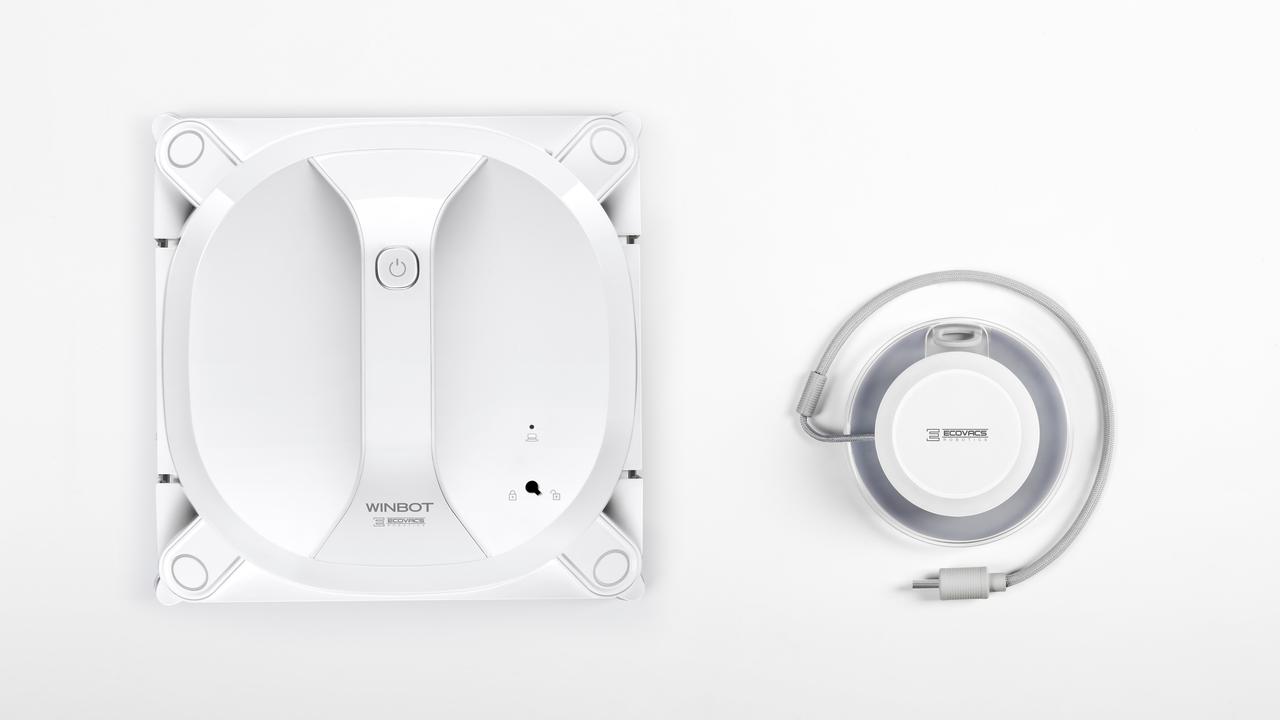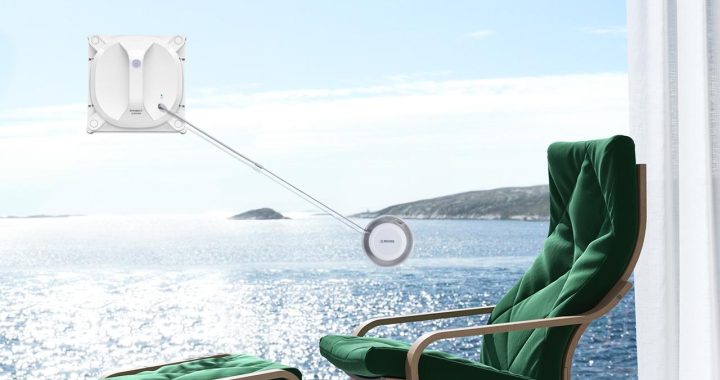My resolution for 2019 is to have gleaming robot-cleaned windows at home. Well, I had some meatier resolutions on my mind when the clock struck 12 on New Year’s Eve. But it does seem 2019 is the year where there will be a clamour from manufacturers to sell you robot window cleaners.
Already there is more than one player in this market. Local distributor robotzoo.com.au has had two on sale for more than a year: the Gecko ($297) and the Glider ($594).
Over summer, I have been trialling China firm Ecovacs’ Winbot X, which also is on sale here ($699).
The Winbot has been a long time coming to Australia. The original Winbots were available overseas from around 2013 and I’d see them at the Consumer Electronics Show (CES) each year in January.
The Winbot X is the latest in a series of Winbot models and is here.

The main unit is a square-looking device that makes the sound of a vacuum cleaner and clings to your window through an air vacuum. The box contains four washable cleaning pads that are square with the middle cut out. They attach to the underneath of the Winbot by velcro.
There is another device in the box that makes Winbot a safer proposition — a battery-operated safety pod with a suction cup that attaches firmly to the window. It’s designed to prevent the Winbot from falling, as the robot is tethered to it at all times. You also get a remote control.
To get going, you charge Winbot, which can take up to 2½ hours. You attach a cleaning pad to the Winbot, and give it eight squirts of Ecovac’s proprietary cleaning fluid. The manual warns you about using more fluid, saying the device could slip.
You switch on the safety pod and attach it firmly to the window, and then attach the tether to the Winbot. You hold the Winbot on the glass, switch it on, and keep holding it until the air vacuum supports it. Press the button again and the Winbot is off, cleaning.
The position of the safety pod is crucial. On smaller windows, less than 1m wide, you can place it in the corner. On larger windows, you place it at the centre of the window. If you don’t, the tether won’t be long enough for cleaning an entire window.
I used Winbot to clean four windows at home, multiple times. The Winbot reached high and low sections of glass I’d otherwise need a ladder for.
If you watch Winbot closely, it misses spots, sometimes gets confused at corners, and if it’s tethered at the window centre, it will miss some sections directly above or below the safety pod. And it’s much slower compared to getting a rag, using elbow grease, and cleaning windows yourself.
Winbot has edge detection sensors at each corner and it negotiated the edges of my windows well, even managing to clean sections of glass below a vertical blind. But it didn’t clean those last few millimetres at the edge of panes.
Winbot chooses to clean either horizontally or vertically. You can choose a “deep cleaning mode” where it does both horizontal and vertical swoops for more thorough cleaning.
In the end, don’t expected Winbot to clean tough, baked-on dirt on windows, and don’t expect the result to be exceptional. It’s best use is to keep reasonably clean glass cleaner for longer, which it managed to do for me over Christmas.
But it’s not all straightforward. There’s the maintenance. You need to clean the square pads that come with the device and they can get dirty quickly. If you don’t clean them, you get smudges on the window. Occasionally you’ll need to replace batteries in the safety pod and remote. They are not rechargeable.

Having to buy Ecovacs’ cleaning solution is another recurrent cost you need to factor in.
Then there’s the Winbot’s battery life. You get about 50 minutes on a single charge, and recharging can take more than two hours. So you won’t get all your windows cleaned ASAP.
After using Winbot, I think window robot cleaners will have a tougher time getting market penetration compared to robot vacuum cleaners, which are now set-and-forget devices. The newest robot vacuum cleaners, including ones by Ecovacs, can be programmed to start vacuuming themselves, and can even recognise obstacles to avoid such as power cords and cables. They return to base and recharge themselves. All you do is empty the contents.
In contrast, robot window cleaners require you to attach them to every window you want to clean and with Winbot you also need to reattach the safety pod as well. You need to keep an eye on Winbot in case it runs out of juice as it will fall if the motor closes down.
Nonetheless, it’s an entertaining and novel means of keeping windows clean and could appeal to early adopters.
As to the future? If robot cleaners can clean really big surface areas on a single charge and jump between window panes like Spider-Man, I’m aboard. The other looming technology is self-cleaning windows, which one day could render even robot window cleaners obsolete.
Obsolete robots — wouldn’t that be poetic justice?
Published in The Australian newspaper

